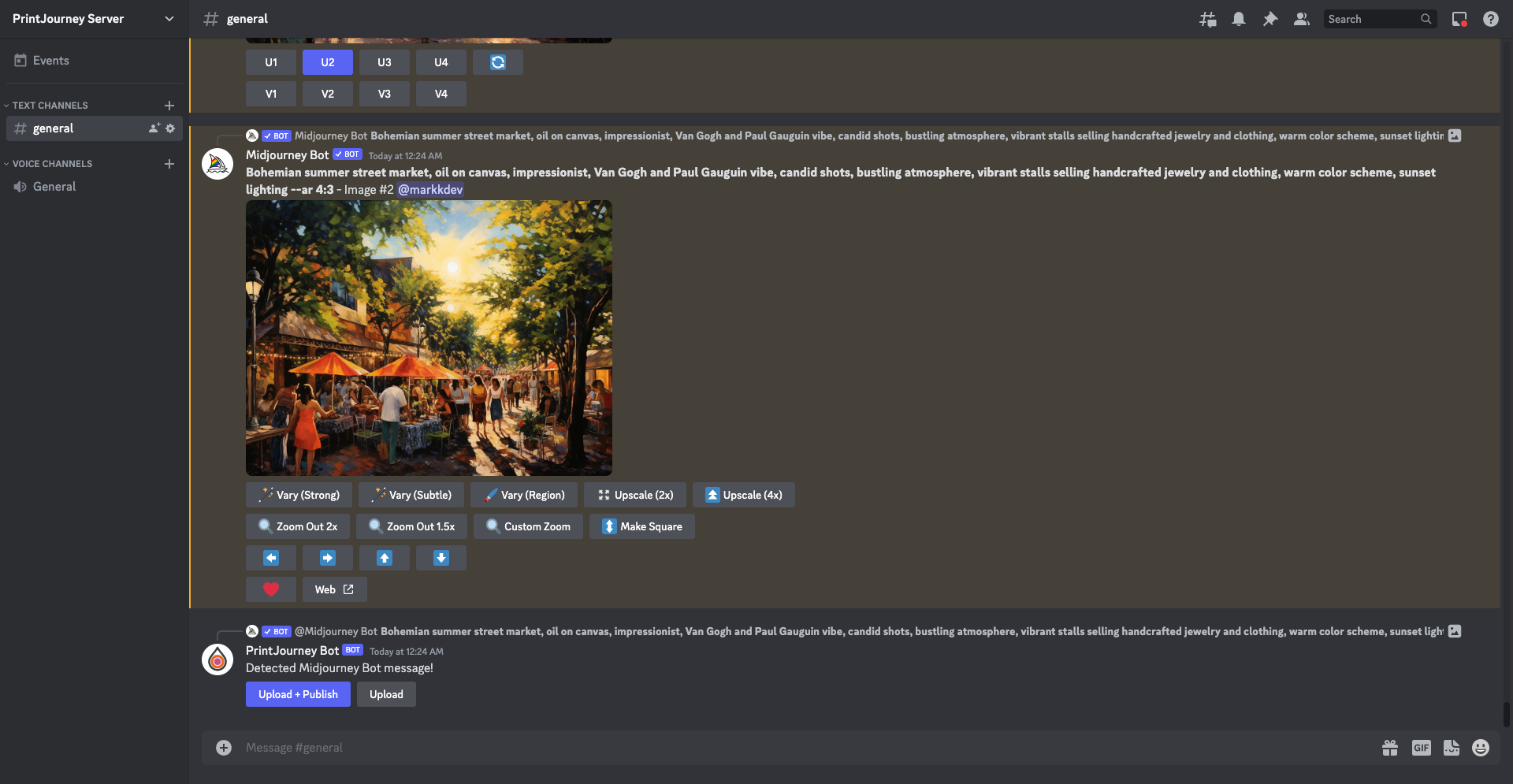
PrintJourney: Complete Buyer's Guide
AI automation platform for print-on-demand workflows
PrintJourney is a specialized AI automation platform targeting print-on-demand workflows for solopreneurs and small-to-medium businesses seeking streamlined design-to-production processes. The vendor positions itself as a bridge between AI image generation tools like MidJourney, Stable Diffusion 3 Turbo, and DALL-E 3 to create automated publishing workflows[40][54][56].
Market Position & Maturity
Market Standing
PrintJourney operates as a niche player in the competitive AI design automation landscape, positioning itself specifically within the print-on-demand segment rather than competing directly with enterprise solutions like Adobe Creative Cloud or accessible platforms like Canva[3][5][14][24].
Company Maturity
The most significant maturity indicator is the inaccessible primary website and documentation, which represents a critical operational continuity risk[43][68].
Growth Trajectory
Available customer feedback suggests a user base concentrated among Etsy sellers and Shopify store owners, indicating growth within the small-scale e-commerce segment[42][68].
Longevity Assessment
The inaccessible primary website and documentation represent a critical operational continuity risk[43][68].
Proof of Capabilities
Customer Evidence
Successful deployments concentrate among Etsy sellers and Shopify store owners producing standardized merchandise, where automation benefits outweigh quality limitations[42][68].
Quantified Outcomes
Customer testimonials report '70% reduction in design time' for template-heavy workflows, though users consistently note that manual adjustments remain necessary for complex layouts[63]. Bulk publishing capabilities demonstrate scale potential with users reporting 'Published 200+ products in 3 hours' through MidJourney integration[54].
Market Validation
The vendor's claimed 83% accuracy in trend forecasting lacks independent verification and appears vendor-sourced without third-party validation[42].
AI Technology
PrintJourney's technical foundation centers on AI workflow automation specifically designed for print-on-demand production pipelines. The platform's core architecture integrates with multiple AI image generators including MidJourney, Stable Diffusion 3 Turbo, and DALL-E 3, potentially offering higher-resolution outputs than basic automation tools[40][56].
Architecture
The vendor's primary technical differentiator lies in Discord-based MidJourney integration, enabling seamless design publishing workflows that bypass traditional manual export processes[54][83].
Primary Competitors
Adobe Sensei, Canva
Competitive Advantages
PrintJourney's claimed differentiators include deep MidJourney integration and specialized print-on-demand workflow optimization[54][83].
Market Positioning
PrintJourney operates as a niche player in the competitive AI design automation landscape, positioning itself specifically within the print-on-demand segment rather than competing directly with enterprise solutions like Adobe Creative Cloud or accessible platforms like Canva[3][5][14][24].
Win/Loss Scenarios
PrintJourney might compete effectively against established players only in highly specific use cases involving existing MidJourney ecosystem users requiring bulk merchandise production with tolerance for quality variability[42][54][68].
Key Features

Pros & Cons
Use Cases
Integrations
Featured In Articles
Comprehensive analysis of AI Print Layout Tools for AI Design for AI Design professionals. Expert evaluation of features, pricing, and implementation.
How We Researched This Guide
About This Guide: This comprehensive analysis is based on extensive competitive intelligence and real-world implementation data from leading AI vendors. StayModern updates this guide quarterly to reflect market developments and vendor performance changes.
139+ verified sources per analysis including official documentation, customer reviews, analyst reports, and industry publications.
- • Vendor documentation & whitepapers
- • Customer testimonials & case studies
- • Third-party analyst assessments
- • Industry benchmarking reports
Standardized assessment framework across 8 key dimensions for objective comparison.
- • Technology capabilities & architecture
- • Market position & customer evidence
- • Implementation experience & support
- • Pricing value & competitive position
Research is refreshed every 90 days to capture market changes and new vendor capabilities.
- • New product releases & features
- • Market positioning changes
- • Customer feedback integration
- • Competitive landscape shifts
Every claim is source-linked with direct citations to original materials for verification.
- • Clickable citation links
- • Original source attribution
- • Date stamps for currency
- • Quality score validation
Analysis follows systematic research protocols with consistent evaluation frameworks.
- • Standardized assessment criteria
- • Multi-source verification process
- • Consistent evaluation methodology
- • Quality assurance protocols
Buyer-focused analysis with transparent methodology and factual accuracy commitment.
- • Objective comparative analysis
- • Transparent research methodology
- • Factual accuracy commitment
- • Continuous quality improvement
Quality Commitment: If you find any inaccuracies in our analysis on this page, please contact us at research@staymodern.ai. We're committed to maintaining the highest standards of research integrity and will investigate and correct any issues promptly.